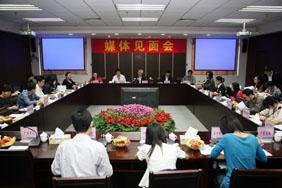 |
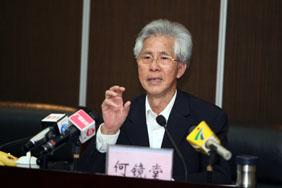 |
| The press conference in session | Academician HE Jingtang introducing the China Pavilion |
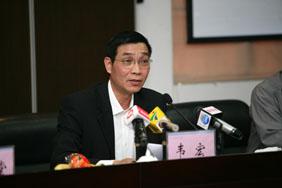 |
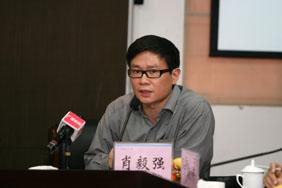 |
| WEI Hong, deputy dean of Architectural Design Institute, introducing the Malaysia Pavilion | Prof. XIAO Yiqiang from School of Architecture introducing the Guangdong Provincial Pavilion |
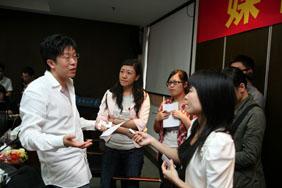 |
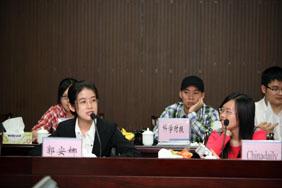 |
| NI Yang, deputy dean of Architectural Design Institute, answering questions | GUO An-na (left), a student reporter selected for the Expo, speaking |
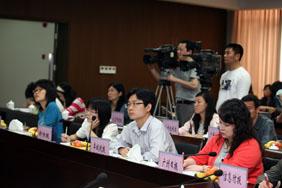 |
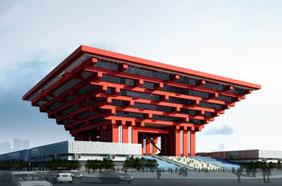 |
| Journalists in the press conference | Design sketch of the China Pavilion |
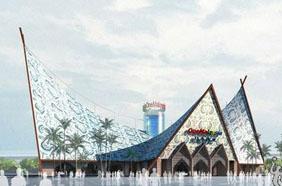 |
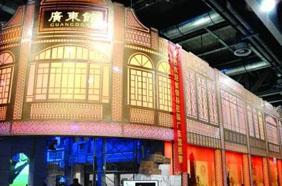 |
| Design sketch of the Malaysia Pavilion | Design sketch of the Guangdong Provincial Pavilion |
After academician HE Jingtang and his design team undertook the design of the China Pavilion, SCUT people have participated in the design of the Malaysia and Guangdong Provincial Pavilions as well. With the Shanghai World Expo approaching, SCUT teachers, students and alumni take great pride in their involvement in this grand world expo with their innovative and pioneering spirit and collective intelligence. On April 12, the University Publicizing Division organized a press conference at Liwu Science and Technology Building for over 31 press media.
The China Pavilion: A complex combining Chinese characteristics with the spirit of the time
In the press conference, academician HE Jingtang interpreted the Chinese elements of the Oriental Crown and explained how to integrate them into the architectural design. He said, "The most distinctive is the design of the ventilation tunnel. There are 31 tunnels on each floor of the Pavilion. Tunnels on the east side are designed as the Chinese character Dong (east), while those on the west as Xi (west)."
In his remarks, He mentioned historical responsibility many times. He said, "Frankly speaking, my previous design works are more noted in the architectural field, while the China Pavilion has drawn much attention from the whole society since the very beginning. It is of great significance to the country. Therefore, huge pressure comes along with the strong sense of historical responsibility." His team hoped that every detail would be perfect.
"The real effect is much better than we have expected," he said.
The Malaysia Pavilion: A complex like an outlandish canoe with exotic charm
The Malaysia Pavilion on the sketch seems like an outlandish canoe with four tall spires which sketches the shape of the moon. It was less than a year before the opening of the Expo that Malaysia presented its pavilion design task to SCUT's Architectural Design Institute. Time is limited and WEI Hong, deputy dean of the Institute, and his team worked around the clock. In a month and a half, they completed all the design work. Later, the Pavilion was topped off, winning a fair name as the Asian Charm.
It is said that the Malaysia Pavilion will be put into trial operations by the end of April. After the Expo is closed, it will be relocated to the Hainan island for future exhibition.
The Guangdong Provincial Pavilion: A golden building overhang embodying green living
The Guangdong Provincial Pavilion project began to call for bids from 2008. However, no one won out in the first round. One of the companies competing for the project invited Prof. XIAO Yiqiang from the School of Architecture to join them. Later, Xiao came back to the bidding with a bold design proposal and finally won the project.
His proposal is named as "building overhang of a paper-cutting style". Building overhang is a kind of traditional Guangzhou architecture which is usually several floors tall with the first floor serves as an arcade for walkers. Xiao's design also borrows from the paper-cutting technique, a traditional art prosperous in Chaozhou and Shantou regions.
The surface of the building overhang is delicate and fine by combining simple with complex. Light pours through the hollowed golden metal sheets, making the whole pavilion shining in gold. In the second bidding, the proposal was elected by a unanimous vote.
In the press conference, when asked why they can always win the bidding, academician He smiled and answered, "Because we have a good work team and we are not afraid of failure."
The Zero Carbon Pavilion: A complex based on low carbon and environment protection concepts
CHEN Shuo, a student of academician He and graduated in 2005 from SCUT, is the curator of Expo's Zero Carbon Pavilion. He hopes that visitors going to the Pavilion can understand and accept the idea of zero carbon, so they can change their way of life and habits to conserve energy and reduce emission. He said, "For example, knives and forks are made of biscuits in the Zero Carbon Pavilion, so we can eat them all after we finish our meals. Cups are made from ice, so they will melt off after we finish drinking."
The Pavilion is made in China with technologies from Britain. Before it, Chen has undertaken two zero carbon projects in Britain and Shenzhen. "The Zero Carbon Pavilion is the first complex completely made of local resources," Chen said.
After the Expo, the Pavilion will be conserved for future exhibition.
Student reporter of the Expo: witnessing the world meeting
After strict selection, GUO An-na, a sophomore from the School of Foreign Languages, succeeded in the official registration of Expo collegiate reporters. As one of the five students from Guangdong province, Guo said, "I take it as my responsibility to spread the ideas of the Expo, to guide college students to innovate, and to make my contributions to social development. I will actively report and cover the Expo activities, show the progress of China's opening to the Expo, and introduce SCUT and Guangzhou to the whole world."
Edited by HU Nanping and CHANG Wei
From SCUT News Network
Related News
- President LI Yuanyuan meets LI Wenyue, Chairman of GDH Limited
- The 1st "Team-Run 1506" National Universities Debating Competition (Guangzhou) opens in SCUT
- Opening ceremony of 17th University Student Film Festival South China Branch held
- Life Sciences Innovation School jointly established by SCUT and Shenzhen Huada Gene Institute
Photos
More>>history
- The Sino-German Symposium on Novel Inorganic Membranes with Nano Design held at
- LING Guangzhi, chief editor of Xinhua News Agency, Guangdong Branch, visits SCUT
- Lights out: SCUT students part of Earth Hour
- SCUT delegation visits Hong Kong Polytechnic University
- Alumnus XIAN Ran elected "2009 Guangdong Top Ten Economic Persons"
Traditions
- Three SCUT teachers awarded the 5th Renowned Teacher of Guangdong Higher
- Delegation of Xi'an University of Architecture and Technology visits SCUT
- SCUT holds opening ceremony for 2010 adult higher education students
- Five SCUT teachers listed in One Thousand Talent Introduction Project
- 2010 undergraduate teaching seminar held
arts
- Over a thousand of students for professional degrees enroll in SCUT
- SCUT students' design gets 1st Prize in HZMB-HKBCF design ideas competition
- KAJITANI Makoto, president of University of Electro-Communications, Japan,
- SCUT holds 2008-2009 commendation meeting of student affairs work
- Academician HE Jingtang awarded International Lifetime Achievement Award of





